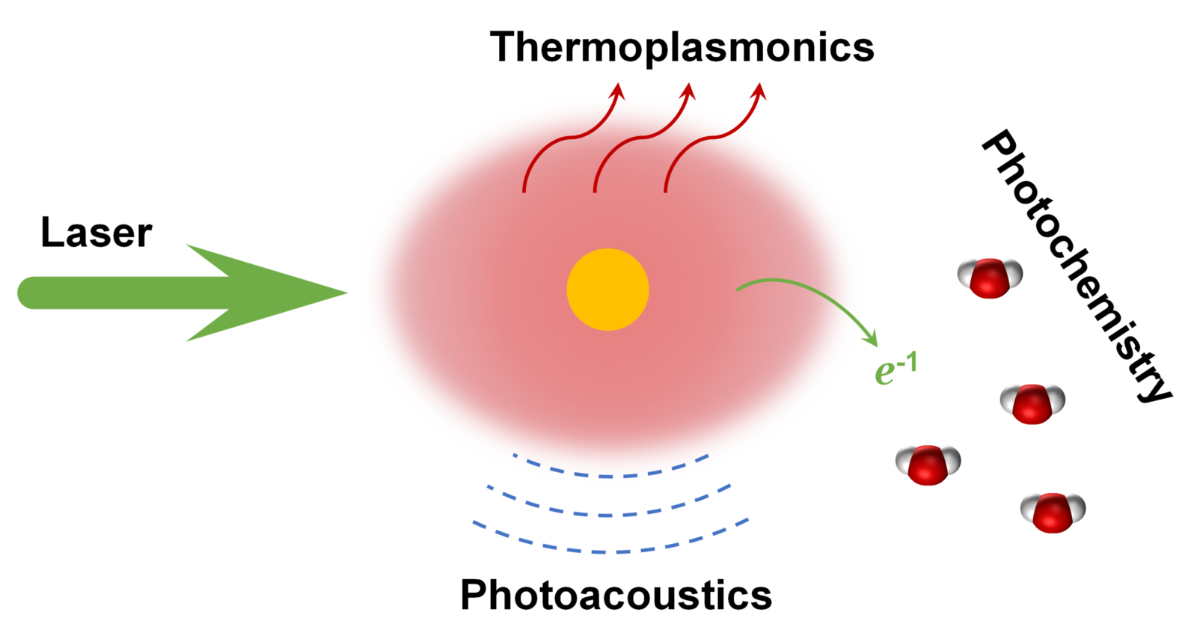Light-Particle Interaction: Thermoplasmonics, Photoacoustics, Photochemistry, and Their Applications
A special issue of Applied Sciences (ISSN 2076-3417). This special issue belongs to the section "Applied Physics General".
Deadline for manuscript submissions: closed (20 September 2023) | Viewed by 5914

Special Issue Editors
Interests: radiative heat transfer; inverse problem; optimization; heat and mass transfer
Special Issues, Collections and Topics in MDPI journals
Special Issue Information
Dear Colleagues,
With the rapid development of nanotechnology, there has been an increasing interest in the research and applications of nanomaterials. Nanomaterials have shown unique and interesting features compared to their bulk counterparts, among which, the phenomena induced by light-particle interactions have attracted the attention of researchers in various fields. When the nanoparticles are illustrated by light, heat will be generated due to the dissipation of light. The temperature increase of the particles will lead to a series of effects including nanoscale heating, electrons excitation, pressure wave generation, and nanobubble generation, therefore triggering their applications in different fields ranging from biomedicine to energy harvesting.
The aim of this special issue is to cover the most recent achievements in the field of light-particle interaction, including fundamental research in the fields of thermoplasmonics, photoacoustics, photochemistry, and their possible applications.
The topics of interest for this Special Issue include but are not limited to the following:
- Thermoplasmonics;
- Photoacoustics;
- Photochemistry;
- photocatalysis;
- Microfluidics based on light-particle interaction;
- Photothermal therapy;
- Solar energy harvesting;
- Fluid flow induced by thermoplasmonics and photoacoustics;
- Photoacoustic probe;
- Photoacoustic imaging;
- Solar water splitting using nanomaterials.
Dr. Yatao Ren
Dr. Renxi Gao
Guest Editors
Manuscript Submission Information
Manuscripts should be submitted online at www.mdpi.com by registering and logging in to this website. Once you are registered, click here to go to the submission form. Manuscripts can be submitted until the deadline. All submissions that pass pre-check are peer-reviewed. Accepted papers will be published continuously in the journal (as soon as accepted) and will be listed together on the special issue website. Research articles, review articles as well as short communications are invited. For planned papers, a title and short abstract (about 250 words) can be sent to the Editorial Office for assessment.
Submitted manuscripts should not have been published previously, nor be under consideration for publication elsewhere (except conference proceedings papers). All manuscripts are thoroughly refereed through a single-blind peer-review process. A guide for authors and other relevant information for submission of manuscripts is available on the Instructions for Authors page. Applied Sciences is an international peer-reviewed open access semimonthly journal published by MDPI.
Please visit the Instructions for Authors page before submitting a manuscript. The Article Processing Charge (APC) for publication in this open access journal is 2400 CHF (Swiss Francs). Submitted papers should be well formatted and use good English. Authors may use MDPI's English editing service prior to publication or during author revisions.
Keywords
- thermoplasmonics
- photoacoustics
- photochemistry
- photocatalysis
- microfluidics based on light-particle interaction
- photothermal therapy
- solar energy harvesting
- fluid flow induced by thermoplasmonics and photoacoustics
- photoacoustic probe
- photoacoustic imaging
- solar water splitting using nanomaterials
Benefits of Publishing in a Special Issue
- Ease of navigation: Grouping papers by topic helps scholars navigate broad scope journals more efficiently.
- Greater discoverability: Special Issues support the reach and impact of scientific research. Articles in Special Issues are more discoverable and cited more frequently.
- Expansion of research network: Special Issues facilitate connections among authors, fostering scientific collaborations.
- External promotion: Articles in Special Issues are often promoted through the journal's social media, increasing their visibility.
- Reprint: MDPI Books provides the opportunity to republish successful Special Issues in book format, both online and in print.
Further information on MDPI's Special Issue policies can be found here.






